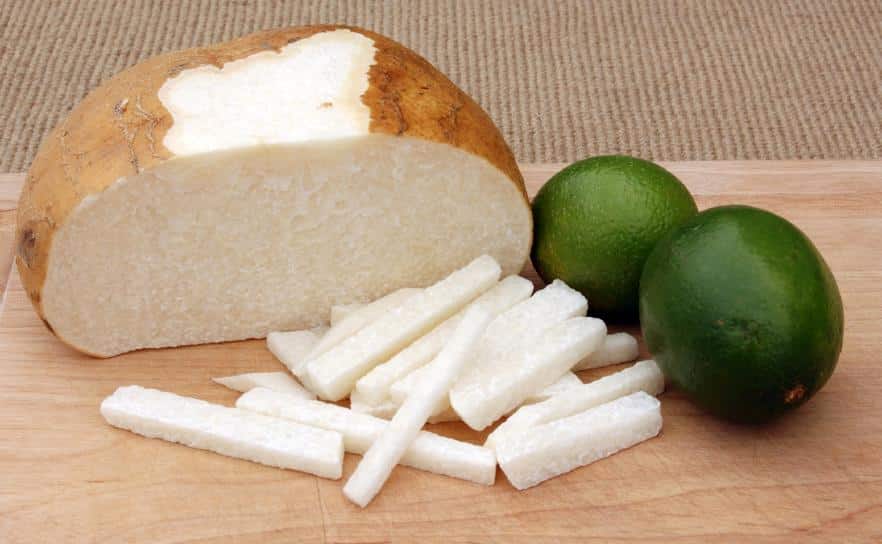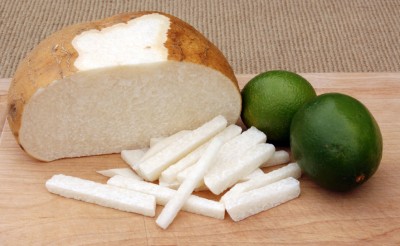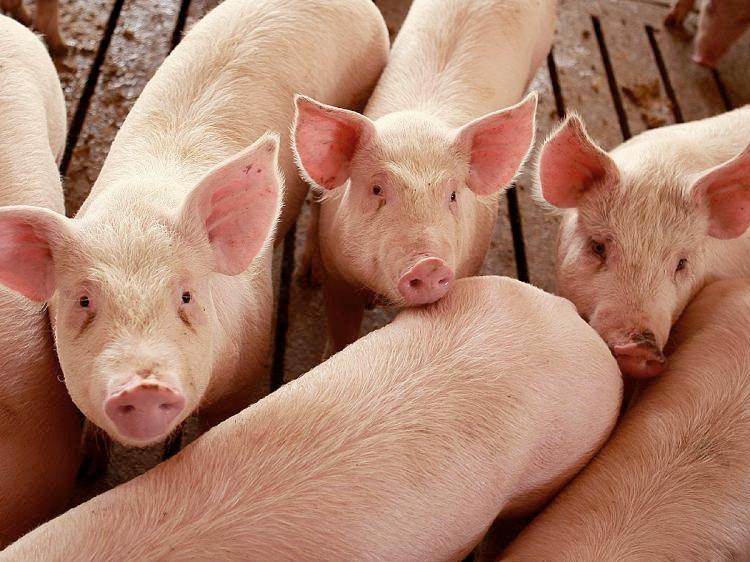Are you lucky enough to live in a temperate climate where it rarely freezes? If so, or if you’ve got a greenhouse, you can grow some vegetables uncommon to much of the country. These vegetables provide new textures and flavors, adding variety to your diet. These include chayote, naranjilla, and jicama.
Chayote
Also known as vegetable pears, chayotes are grown in Latin America. They are a light green fruit shaped like a pear. When sautéed like summer squash, they taste similar, except they’re a little sweeter.
To grow chayote, you first have to find the seed. One way to do this is to buy a few mature chayotes in Latino or Asian stores in the fall. Wrap them and store in a cool place. By February, the seed inside the fruit should have sprouted to a few inches long. Plant at least two of them five feet apart, with just the tip of the new growth reaching out of the soil. If you’re in a cooler climate, start them in a pot in a greenhouse. Chayote vines grow rampantly and require a lot of space or trellising. After six to nine months of frost-free weather, the pear-shaped fruits are ready for harvesting.
I find the raw fruits rather unpalatable, but others eat them raw like cucumbers. However, I recommend lightly sautéing them alone or with summer squash.
Chayote is a great choice for sustainable gardening because many different parts of the plant can be eaten. Green shoots can be prepared like asparagus or used in stir-fries. You can harvest the roots and use them like potatoes or fry them like yams.
Chayote is a prolific producer with many edible parts, so consider making them part of your garden.
New Natural Fertilizer Doubles Garden Production!
Naranjilla
Naranjilla, also known as the apricot tomato, is a cousin of tomatoes. Originating in South America, it is now grown throughout much of Latin America, as well as in temperate regions of the United States. Naranjilla fruit are orange (naranjilla means “little orange” in Spanish) and the size of a small tomato. They are covered with short brittle hairs that repel insects and are easily removed by rubbing.
Naranjilla are finicky plants. They don’t tolerate frost and don’t like really hot temperatures. Therefore, unless you live in Florida or Hawaii, your best bet is to start them early in a pot in your home or a greenhouse. Once the weather is warm enough, set out the seedlings six to eight feet apart, preferably in well-composted soil in an area with some shade. With generous watering, the plants will grow into a spreading shrub up to eight feet tall. A healthy plant yields up to 150 fruit per year.
Once ripe, the fruits are about two inches in diameter, with a greenish pulp. Their taste has been described as a mix between tomatoes, apricots, and pineapple. Although occasionally eaten raw, traditionally the fruits have been used to make a refreshing summer drink or fermented into wine.
Very few fruits (like strawberries) grow in one year. Try naranjilla for a fresh fruit taste that yields in its first year.
Jicama
If you’re like me, you make the garden work for you the entire growing season. Here in California’s central valley, it’s too hot to grow potatoes in the summer, so I’ve found a ready substitute in the jicama. Although you can occasionally find these turnip-shaped root vegetables in grocery stores, they are usually imported because few Americans grow them in their gardens.
Depending on how much organic amendment is present in the soil, jicama requires up to five-to-nine months of hot weather, so they may need to be started indoors in most temperate climates. A couple of months after your last frost date has passed, plant your pre-soaked seeds or seedlings in amended soil about a foot apart in three-foot rows. Provide some trellising for these plants so you can train their vines as they grow. Like potatoes, any part of the jicama root above ground is poisonous, so cover any exposed parts with soil. Once the plant has died back, harvest the roots and store them in a cool dark location.
Raw jicama has a taste somewhere between an apple and a potato. They go great on a salad with other summer vegetables. However, I prefer to cook them as a mashed potato substitute. I boil them for about ten minutes, mash them with butter and milk, and enjoy.
Conclusion
One of the great aspects of gardening is that you can do it almost anywhere in the United States. From the blistering cold of the north to the searing heat of the southwest to the hot humidity of the southeast, you can have a successful garden. We’ve previously pointed out some great rare vegetables for cooler climates. But if you live in temperate climates, give your taste buds a treat by enjoying a cool naranjilla drink while feasting on sautéed chayote with mashed jicama.












